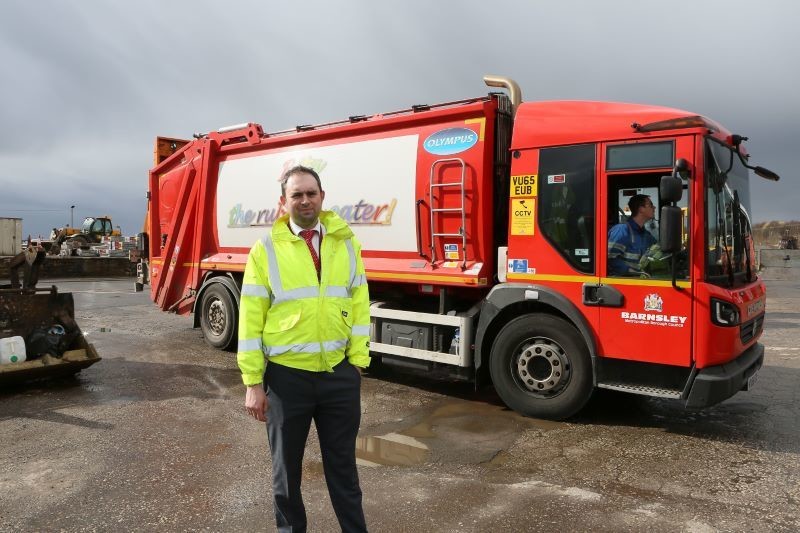THE amount of plastic we throw away has been in the news more since David Attenborough’s Blue Planet II series revealed the amount that ends up in the sea - we went to the council’s Smithies depot to find out what we can and can’t put in our recycling bins.
The rules seem simple - plastic bottles, glass and tin cans go in the brown bin.
But can the lids go in too? And should we leave them on? And do we have to rinse them out?
And our rubbish comes in so many different shapes, sizes and colours, it can be hard to know what is classed as a bottle.
Yoghurt pots, plastic trays containing mushrooms, grapes and even meat and fish all look vaguely like the same stuff the bottles are made of, so can’t they go in too? Definitely not.
Plastic that isn’t a bottle must not go in the brown bin, with yoghurt pots being one of the most common items wrongly put in the brown bin. They should be put in the grey bin with general waste.
Why? Put most simply, the machine which sorts out all our recycling waste can only identify plastic bottles. The company that takes it all uses the bottles to effectively melt them down to make new plastic bottles.
There are so many different types of plastic, and mixing them together makes them more difficult, more expensive, and even impossible to recycle. Once the waste is out of the council’s hands it can move on through a supply chain where it might end up in landfill if not properly sorted.
Stick to plastic bottles. Fizzy drinks, orange squash, bottled water and milk bottles are all fine. And you can leave the lids on. Metal beer bottle tops can also go in, as can glass jars and their metal jar lids.
The advice is to rinse them out, but this isn’t vital. You should at least make sure they’re empty and your bin will smell better if you do rinse them.
Squashing the bottle and then tightening the lid will save space and help keep down the smells.
All other plastic needs to go in the grey bin with general waste.
But throwing it in the grey bin doesn’t mean it will end up in landfill. Less than five per cent of the rubbish collected by the council does.
Grey bin waste ends up at the joint Barnsley, Rotherham and Doncaster waste plant at Manvers. There it gets a second chance to be recycled. The first stage of treatment at Manvers is to sort through and pull out any items that can still be recycled - although this costs six times more than if it had been recycled through the proper bin.
What’s left is then treated through a combined mechanical biological treatment plant and a dry anaerobic plant, which in simple terms helps break it down, and turns the remaining waste into a fuel which is sent to Ferrybridge where it is used to generate low-carbon electricity.
“If you’re in doubt about something plastic, put it in the grey bin,” said Dale Sparks, the council’s head of commercial support services. “If it’s a bottle it’s definitely better in the brown bin. It costs six times less to recycle it that way, which is basically helping keep down your council tax bills. But if you are in doubt, it’s better it goes to Manvers, where it might still be recycled, but in the worst case it gets turned into electricity.”
***
EVER wondered if you’re putting your rubbish in the right bins? Here’s a few examples of what goes where - there might be a few surprises.
BROWN BINFizzy drinks bottlesPlastic milk bottles and lidsShampoo/shower gel bottlesBleach bottles including lidsTin cansFizzy drinks/beer cansGlass bottlesMetal beer bottle topsGlass jars - and metal lidsBroken glass bottles/jars (but not broken windows, mirrors or Pyrex)Foil trays - eg mince pies (but not kitchen foil)Corned beef tinsFray Bentos pie tins
BLUE BINCardboard (remove all plastic packaging)Corrugated cardboardPizza boxes (if soiled with food put in grey bin)Plain greetings cards (no plastic/glitter etc)Paper Magazines
GREY BINAll general wasteFood wasteNappiesPlastic which isn’t bottlesYoghurt potsMargarine tubsPlastic meat packagingPlastic fruit/veg packagingCling filmTin foilMirrors (cannot go in with glass) Light bulbs
GREEN BINGarden wasteGrass cuttingsLeavesWeedsFlowersPlantsBark and wood shavingsHedge clippingsTwigsSmall branches



























